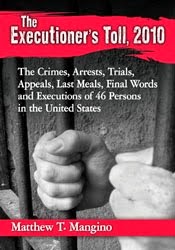The Crime Report
March 20, 20012
Today (March 20), the U.S. Supreme Court will hear oral argument in two cases challenging sentences of life without parole for murders committed at the age of 14. If recent trends are any indication, the court will restrict the use of life without parole for juveniles, but will not eliminate the practice.
As violent crime rates soared in the late 1980s and early 1990s, juveniles became the target of ever increasing penalties. In 1995, Pennsylvania’s newly-elected Governor Tom Ridge called for a special legislative session on crime.
Ridge
cajoled the legislature into overhauling the juvenile justice system with the mantra “adult time for adult crime.”
A fundamental change in the law made it easier to charge juveniles as adults. In fact, certain violent offenses require prosecutors to charge juveniles as adults.
Pennsylvania’s mandatory sentence of life in prison without parole for first degree murder has landed more than 450 people in prison for life for killings committed as juveniles—the most in the nation.
How did we get to the point in this country where
about 2,600 inmates are serving life sentences for crimes committed as juveniles?
The answer is the "super-predator.”
The term was coined by John Dilulio, who in 1995 as a professor at Princeton University wrote an article entitled, "The Coming of the Super-predators.”
The article incited fear among policymakers across the country who believed that remorseless, gun-toting juveniles were being treated leniently and were therefore embolden to commit violent crimes without real consequences.
At the time, an ominous
Seattle Times article included Dilulio’s warning of a growing teen population that would cause even more mayhem.
Dilulio argued that super-predators presented a serious problem for communities across the country.
"Each generation of crime-prone boys has been about three times as dangerous as the one before it," Dilulio wrote. Thus "the demographic bulge of the next 10 years will unleash an army of young male predatory street criminals who will make even the (gang) leaders of the Bloods and the Crips . . . look tame by comparison."
Juveniles were in the cross-hairs of policymakers nationwide as state after state enacted legislation to treat juveniles as adults in the criminal justice system. However, the next 10 years were nothing like Professor Dilulio predicted.
The Department of Justice’s 2006 National Report on Juvenile Offenders and Victims demonstrated that the rate of juvenile violent crime arrests consistently
decreased since 1994, falling to a level not seen since at least the 1970s.
Just as concern about juvenile crime was beginning to grow, the U.S. Supreme Court restricted the application of the death penalty for some juvenile offenders.
In 1988, the Court outlawed the execution of juveniles under the age of 16. A year later the court affirmed the constitutionality of executing juveniles age 16 and 17. On the same day the Supreme Court also upheld the death penalty for the mentally retarded.
The law would not change for another 13 years.
In 2002, the court ruled in
Atkins v. Virginia that executing the mentally retarded was cruel and unusual punishment in violation of the Eighth Amendment to the U.S. Constitution.
Atkins launched a series of decisions that relied on evolving standards of decency as evidenced by a national consensus against excessive sentencing, particularly as related to juveniles.
In 2005, the Supreme Court struck down the execution of juveniles. In
Roper v. Simmons, the Court held that it was cruel and unusual punishment to execute any person who was convicted of first-degree murder while under the age of 18.
In support of a "national consensus" against juvenile executions, the Court noted the decreasing frequency with which states were sentencing juveniles to death. At the time of the decision, 20 states had laws permitting the death penalty for juveniles, but only a handful of states had executed prisoners for crimes committed as juveniles.
Furthermore, in the 15 years prior to the Roper decision five states had abolished the death penalty for juveniles.
The Court explained that the primary criterion for determining whether a particular punishment violates society’s evolving standards of decency is objective evidence of a national consensus as expressed by legislative enactments and jury practices.
Gauging the acceptance or rejection of a particular criminal punishment requires an examination of both the work of the various legislatures and actual sentencing practices in courtrooms across the country.
The
two cases scheduled for argument before the Supreme Court this week are
Jackson v. Hobbs, No. 10-9647 and
Miller v. Alabama, No. 10-9646.
Kuntrell Jackson is an Arkansas man who was 14 when he and two older co-defendants
tried to rob a video store in 1999. One of Jackson’s co-defendants shot and killed the store clerk. Evan Miller is an Alabama prisoner who was 14 in 2003 when he and an older youth beat a 52-year-old neighbor and set fire to his home after an evening of drinking and smoking marijuana. The neighbor died as a result of the attack.
As Jackson and Miller’s cases are about to be argued before the Supreme Court, it is instructive to look back at successful consensus arguments made before the court in the last 10 years.
In Atkins, 30 states had banned the execution of the mentally retarded. In addition, during the modern era of the death penalty, only five states had executed an inmate with an IQ under 70, the unofficial threshold for mental retardation.
In Roper, again 30 states had outlawed execution for juveniles. More importantly, only three states—Oklahoma, Texas and Virginia—executed an inmate convicted as a juvenile of murder in the 10 years prior to the Roper decision.
In
Graham v. Florida, the 2009 Supreme Court decision that banned life in prison without parole for juveniles who committed non-homicide offenses, there were 37 states that authorized life sentences for non-homicide offenses.
Nationwide, however, only 123 inmates serving life without parole were convicted of non-homicide offenses as juveniles. Nearly two-thirds were in Florida alone; the rest were scattered among 10 other states.
Unlike Atkins and Roper, today a significant majority of jurisdictions provide, at least theoretically, for life in prison without parole for offenders as young as 14-years-of-age.
The number of states is even more than the 37 states with laws on the books providing for life for non-homicide offenses prior to Graham. However, similar to Graham, few offenders in the U.S. are serving life without parole for offenses committed at age 13 or 14.
There are only 79 inmates serving life without the possibility of parole for killings committed at the age of 14 or under.
Prosecutors argue that the low number of persons serving life for offenses committed at such a young age is more reflective of how rare such killings are and not a national consensus against sentencing young offenders to life.
In fact, the
amicus brief filed by the National District Attorney Association argues that it is illogical to suggest that there is a national consensus against such sentences. On the contrary, a majority of states have made it easier to sentence juvenile killers to life in prison, and at least
three states—Florida, Nebraska and Louisiana—have recently considered, and rejected, efforts to allow parole for juvenile lifers.
The Supreme Court will likely move in the same direction it did in 1988 with juveniles and the death penalty. It will outlaw life without parole for juveniles 14 and under—and leave, for another day, the review of life without parole for all juvenile offenders.







